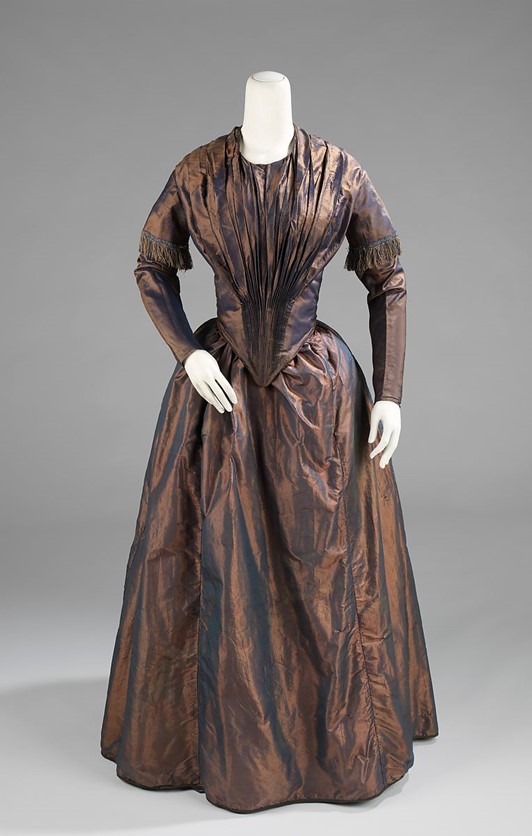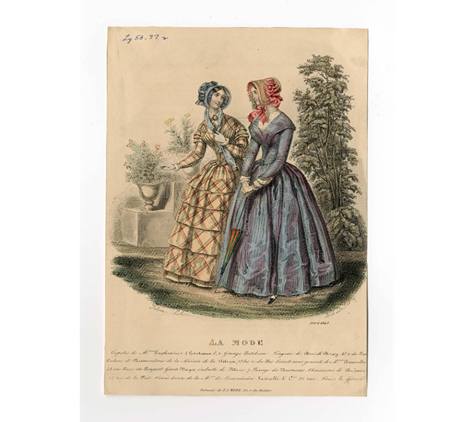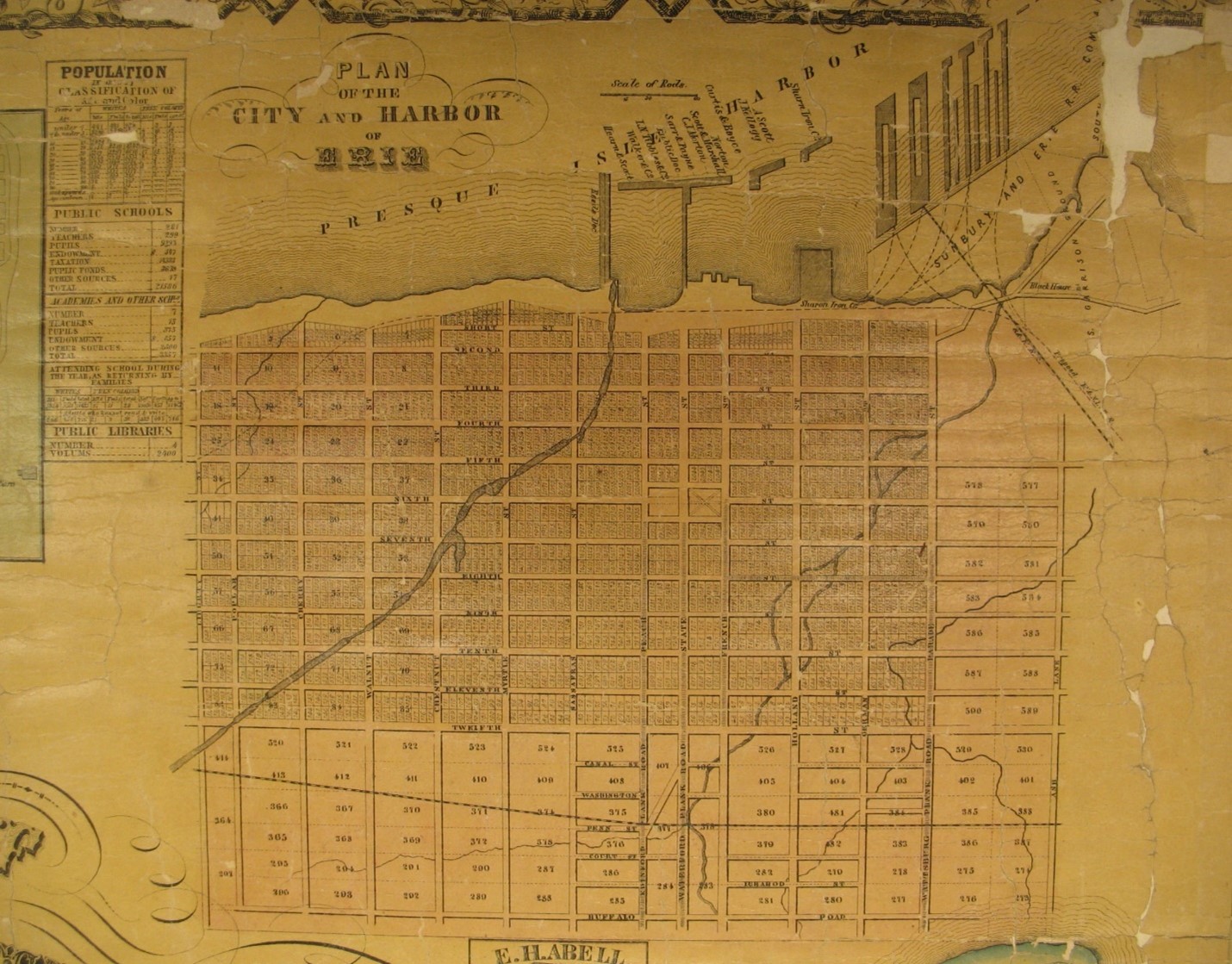Informed and inspired by the historicism of the Romantic Era, dress silhouettes of the 1840s had a long waisted bodice, tight, narrow sleeves, and a full dome-shaped skirt that would skim the floor. The Gothic revival of the Romantic Era was imitated in the fashion world as women became walking Gothic structures with their dresses utilizing Gothic architectural characteristics such as narrow arches and angular shapes.

A corset would be worn over the breasts and hips to emphasize the long, small waist, and shaped shoulders that was considered fashionable at the time. The dress would restrict the movement of the wearer, preventing bending from the waist.
In the early 1840s, the loose sleeves that were characteristic of the 1830s dress, were often still seen. The dress from this time that is exhibited in the collection at the Hagen History Center, is a wedding gown worn by the grandmother of Susan Cross, and was donated by Susan in 1922. This dress has the loose style sleeves that were common of dresses created in the late 1830s and early 1840s. The dress is made from silk and the bodice has a V-neck. Silk was used primarily for more formal occasions, while cotton, wool and linen were used for less formal occasions. Silk was manufactured here in Erie starting in the 1830s. Silkworms were raised by Miss Jane McNair at her home on 8th and Sassafras Street, and by Mrs. Chandler L. Munn, who fed her silkworms mulberry branches at her residence at 12th and State Street.
By 1842, the dominant dress style featured narrow, tightly fitting sleeves. Dresses of this period were rather plain. There was a general lack of trim, and the emphasis for designers was more on the type of textile used. Women’s clothing in the 1840s was all hand sewn. The sewing machine was invented by Elias Howe in 1846 but would not be widely used until the 1850s. Except for corsets and loose-fitting cloaks, very few articles of women’s clothing were available for purchase already made. Although most women had a sound understanding of sewing, the complex designs of dresses in the 1840s required the help of a seamstress.
The women’s fashion of this era displayed their moral virtue. The restrictive movement that the dress provided wearers was symbolic of the Puritanical restraint that was expected of women at the time. Bonnets were designed with this in mind, they focused the wearers sight, a reminder to keep on a straight, virtuous path. Queen Victoria’s ascension to the throne in 1837 and her modest fashion sense, helped cement this sentiment of restraint into the world of fashion.

In 1840, the town of Erie was made up of only 3,412 people, and the county of Erie’s population was 31,344. The town increased its population to 5,858, and the county increased its inhabitants to 38,742 by the time of the 1850 census. The increase in population was aided by completion of the Erie Extension Canal in spring of 1845.

There were no steam shovels or bull dozers to assist in the digging of the canals, so they were dug using shovels and picks by mostly Irish immigrants. This canal linked the waters of Lake Erie to Pittsburgh and allowed for the easier transportation of goods. The canal went from the Reed docks in the Erie Bay and ran south through the city. The canal also transported people. A transportation station existed on 8th Street, which is where travelers would disembark from the canal. After the completion of the Erie and Pittsburgh Railroad in 1852, the canal was used less frequently and was completely abandoned after the collapse of the Elk Creek viaduct at Platea in 1871.
In 1840, the city’s water supply was sourced from a spring that was located on the Reed farm which was south of 18th Street and west of Parade Street. This was the first public water system for the young borough, as Erie was not yet large enough to be considered a city. Water was carried by hollowed out logs from the spring to the city. This primitive water works was used until about 1868.
In 1842, the first telegraph line was erected in Erie County. The line extended from Buffalo to Cleveland. This allowed for quick communication between far distanced cities and was of tremendous help to the businesspersons of Erie as they now had a much more efficient manner of doing business.
Sources:
Erie History – The Women’s Story
Erie, Pennsylvania Illustrated 1888
